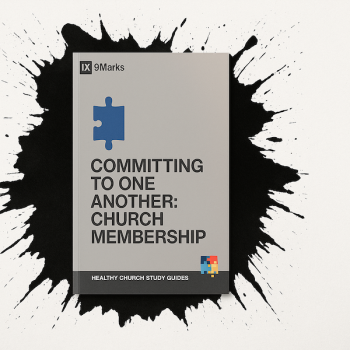 By J. Ryan Parker
By J. Ryan Parker
Believe it or not, but the future of Christian cinema does not lie in Hollywood. To see this future, you need only to look to the small town of Albany, Georgia, and specifically Sherwood Baptist Church. In 2003, Sherwood Baptist Church began Sherwood Pictures, a filmmaking ministry, with the production of Flywheel. This $20,000 production was only ever intended to screen at their local theater and, perhaps, in a few other surrounding congregations. Word of mouth quickly spread, and the film moved to other theaters across the country and also aired on numerous religious cable networks. They more than recovered their investment, and two years later began production of their second feature-length film, Facing the Giants (2006), followed up with Fireproof (2008) two years later. Costing $100,000 and $500,000 respectively, they earned $30.2 and $64.8 million, respectively, from box office and DVD sales. They have just wrapped the shooting of their fourth film, Courageous, set to premier next spring, with an estimated $1.5 million budget.
It would be easy to consider Sherwood Pictures as another opportunistic response to the success of The Passion of the Christ (2004), yet they began dreaming about film production before Gibson's film overwhelmed Hollywood and the church alike. A great portion of recent Hollywood history involves what has become known as chasing Passion dollars, the attempt of Hollywood studios to cash in on a religious audience. Many studios green-lit religious projects that struggled to break even at the box office and saw moderate financial returns on DVD sales. In the years following The Passion, studios have fared better as distributors of religious productions rather than producers -- 20th Century Fox's Fox Faith and Sony's Affirm Films, for example.
Sherwood Pictures represents a replicable model of independent, Christian filmmaking for the 21st century. You don't even really need the $20,000. (Independent horror feature, Paranormal Activity [2007] cost $15,000 and took almost $108 million at the box office.) Equipment is cheap and the means of garnering attention to your production is virtually free (Twitter, Facebook, Vimeo, Without a Box, etc.). Even the most technologically ill-equipped faith communities stand a chance . . . just watch Flywheel and listen to the creators' commentary about their naïveté when shooting. One church, New Song Community Church in Oceanside, California, has already followed in Sherwood's footsteps and, from the start, wanted to create a visually/creatively superior product compared to their predecessor's. Their film, To Save a Life(2009), cost $500,000 and took $3.7 million at the box office. The DVD releases in a few weeks.
These churches' ability to create such profitable features is directly related to their low budget. Because they do not rely on outside investors, they can closely guard their films' religious messages, messages that secular studios might want to downplay in order to reach a larger audience. Ironically, in rejecting a potentially larger audience, Sherwood and New Song fully tap into the conservative, evangelical audience that is large enough to financially sustain their work. The only problem with these films lies in their cultural and theological homogeneity. These films represent a highly conservative theological and cultural worldview and are more Christian propaganda than a vision of what life in the real world is like.




